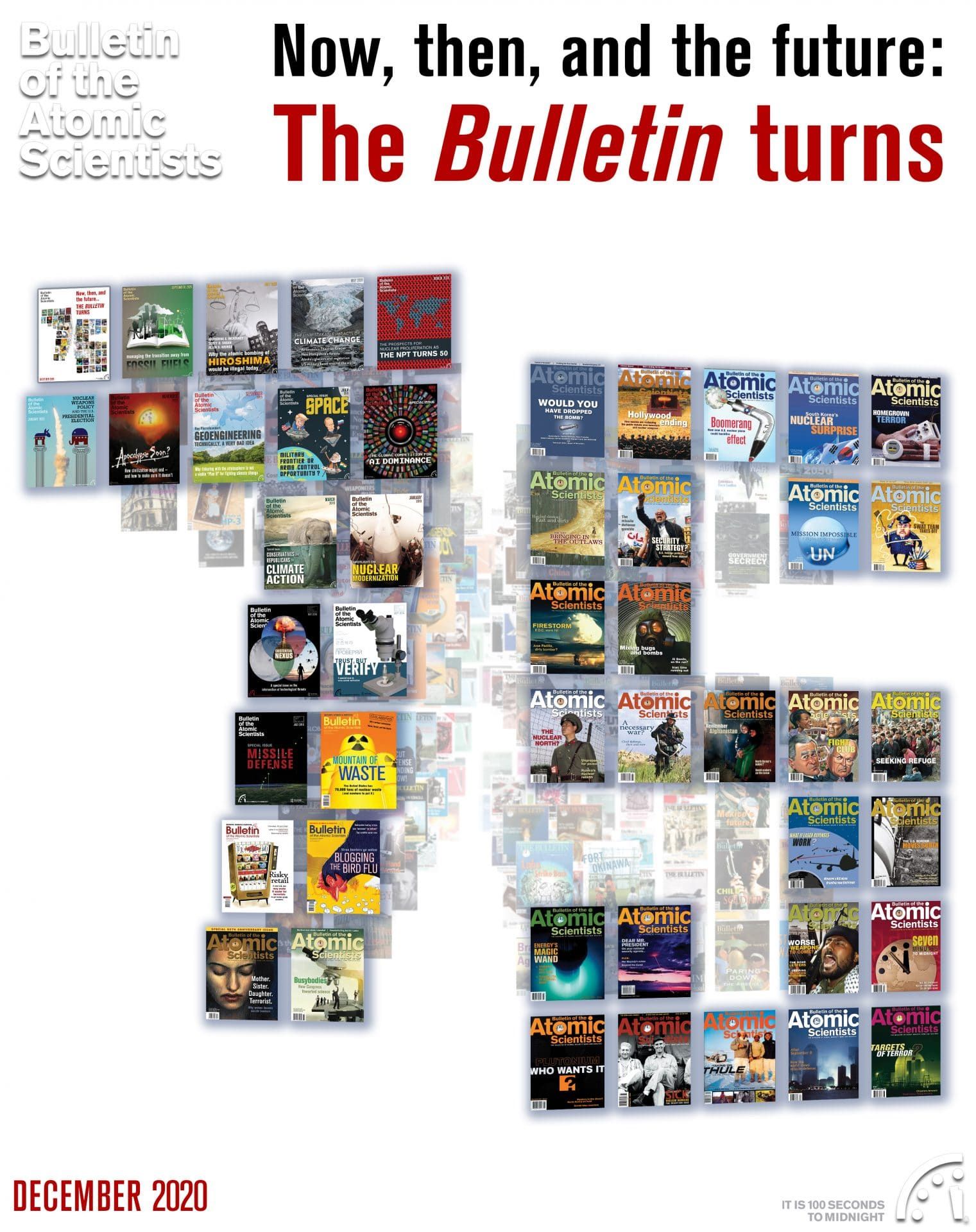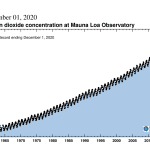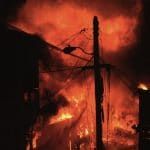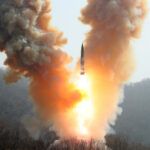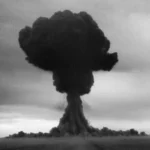2002: Nuclear gamblers
By Pervez Hoodbhoy | December 7, 2020
2002: Nuclear gamblers
By Pervez Hoodbhoy | December 7, 2020
Editor’s note: This article originally appeared in the September/October 2002 issue of the Bulletin. It is republished here as part of our special issue commemorating the 75th year of the Bulletin.
For more than a decade before India initiated nuclear testing in May 1998, the rival nuclear tribes in Pakistan and India had pleaded for converting their respective country’s covert nuclear program into an overt one. They argued that because war between two nuclear states was impossible, unsheathing the bomb would bring an era of unprecedented peace, stability, and reduced defense budgets.
 They could not have been more wrong. Since January, thousands of artillery shells have been exchanged across the Line of Control in Kashmir, destroying the lives of border residents. By May, a million troops glowered at each other across the border; some Indian and Pakistani cities tested their air raid sirens. On into June, as tensions mounted, world leaders worked overtime to prevent tensions between Pakistan and India from exploding into war
They could not have been more wrong. Since January, thousands of artillery shells have been exchanged across the Line of Control in Kashmir, destroying the lives of border residents. By May, a million troops glowered at each other across the border; some Indian and Pakistani cities tested their air raid sirens. On into June, as tensions mounted, world leaders worked overtime to prevent tensions between Pakistan and India from exploding into war
As of August, although troops have not yet been demobilized, tempers are down a notch, and a semblance of normalcy has emerged. But even at the peak of the crisis, few Indians or Pakistanis lost much sleep. Stock markets flickered, but there was no run on the banks or panic buying. Schools and colleges, which generally close at the first hint of crisis, functioned normally.
The outside world saw the situation in very different terms—as a fierce and suicidal struggle between two nuclear-armed states. But while foreign nationals streamed out of both countries, we saw the crisis as more of the usual-except that the rhetoric was a bit fiercer and the saber-rattling a bit louder.
In a public debate in Islamabad, Gen. Mirza Aslam Beg, the former chief of Pakistan’s army, declared: “We can make a first strike, and a second strike, or even a third.”
The lethality of nuclear war left him unmoved. “You can die crossing the street,” he observed, “or you could die in a nuclear war. You’ve got to die someday anyway.”
Across the border, India’s Defence Minister George Fernandes, in an interview with the Hindustan Times, voiced similar sentiments: “We could take a strike, survive, and then hit back. Pakistan would be finished.” Indian Defence Secretary Yogendra Narain took things a step further in an interview with Outlook Magazine: “A surgical strike is the answer.” But, he added, if that failed to resolve things, “We must be prepared for total mutual destruction.” A hawkish Indian security analyst, Brahma Chellaney, demanded that India “call Pakistan’s nuclear bluff.”
***
Pakistan and India are making history in their own way. No other nuclear states have engaged in such fiery rhetoric, no matter how great the tension between them. The fear of mutual destruction has always put sharp limits on the tone and volume of nuclear rhetoric. So, what accounts for the extraordinary difference between us Pakistanis and Indians and the rest of the world? What makes us such extraordinarily bold nuclear gamblers, playing close to the brink?
In part, the answer has to do with the fact that India and Pakistan are societies in which the fundamental belief structure demands disempowerment and surrender to larger forces. A fatalistic Hindu belief that the stars above determine our destiny, and the equivalent Muslim belief in qismet, certainly account for part of it. Conversations and discussions often end with the remark that “what will be, will be,” after which people shrug their shoulders and move on to something else. Because they feel they will be protected by larger, unseen forces, the level of risk-taking is extraordinary. (Any trip on the madly careening public buses in either Karachi or Bombay—which routinely smash into and kill pedestrians—proves the point.)
But other reasons may be more important.
Close government control over national television, especially in Pakistan, has ensured that critical discussion of nuclear weapons and nuclear war is not aired. Instead, in Pakistan’s public squares and at crossroads stand missiles and fiberglass replicas of the nuclear test site. For the masses, they are symbols of national glory and achievement, not of death and destruction.
Nuclear ignorance is the norm, extending even to the educated. When asked, some students at the university in Islamabad where I teach said that a nuclear war would be the end of the world. Others thought nukes were just bigger bombs. Many said it was the army’s concern, not theirs. Almost none knew about the possibility of a nuclear firestorm, residual radioactivity, or damage to the gene pool.
Because nuclear war is considered a distant abstraction, civil defense in both countries is nonexistent. As India’s Adm. Ramu Ramdas, now retired and a leading peace activist, caustically remarked, “There are no air raid shelters in this city of Delhi, because in this country people are considered expendable.”
Islamabad’s civil defense budget is a laughable $40,000 and the current year’s allocation has yet to be disbursed. No serious contingency plans have been devised-plans that might save millions of lives by providing timely information about escape routes, sources of non-radioactive food and drinking water, or iodine tablets.
***
Ignorance and its attendant lack of fear make it easier for leaders to treat their people as pawns in a mad nuclear game. How else to explain Indian Prime Minister Atal Bihari Vajpayee’s recent exhortations to his troops in Kashmir to prepare for “decisive victory”? His nuclear brinksmanship is made possible by influential Indian experts seeking to trivialize Pakistan’s nuclear capability. Such analysts have gained wide currency, offering instant security to all who choose to believe them.
The reasoning of the “trivialization school” goes as follows: Pakistan is a client state of the United States, and Pakistani nuclear weapons are under U.S. control. In an extreme crisis, the United States would either prohibit their use or, if need be, destroy them.
At a January meeting in Dubai, senior Indian analysts said they were “bored” with Pakistan’s nuclear threats and no longer believed them. K. Subrahmanyam, an influential hawk who has advocated overt Indian nuclearization for more than a decade, believes that India can “sleep in peace.”
Indian denial of Pakistani capabilities is not a new phenomenon. Two months before the May 1998 nuclear tests by India and Pakistan, a delegation from Pugwash, an international organization of scientists concerned about nuclear war, met in Delhi with Prime Minister Inder Kumar Gujral. A member of the delegation, I expressed worries about a nuclear catastrophe on the Subcontinent. Gujral repeatedly assured me-both in public and in private–that Pakistan was not capable of making atomic bombs.
He was not alone. Senior Indian defense analysts like P. R. Chari had also published articles before May 1998 arguing this point, as had the former head of the Indian Atomic Energy Agency, Dr. Raja Ramana.
Pakistan proved the doubters wrong. Forced out of the closet by the Indian tests, Pakistan’s nuclear weapons gave the country a false sense of confidence and security. This encouraged it to launch its secret war in the Kargil area of Kashmir. India wanted to respond, but the existence of Pakistan’s deterrence sharply limited its options.
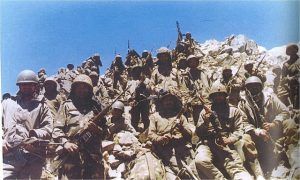
***
Then came September 11. In a global climate deeply hostile to Islamic militancy, new possibilities opened up to India. Seeking to settle the score, India now began to seriously consider cross-border strikes on militant camps on the Pakistani side of the Line of Control. To sell the idea to the Indian public, it became essential to deny the potency of Pakistan’s nuclear weapons.
But to fearlessly challenge a nuclear Pakistan requires the denial of reality. It is an enormous leap of faith to presume that the United States would have either the intention—or the power—to destroy Pakistani nukes. Tracking and destroying even a handful of mobile nuclear-armed missiles would be no easy feat.
In 1991, US efforts to destroy Iraqi Scuds had limited success. No country has ever tried to take out another’s nuclear bombs. It would be fantastically dangerous because one needs 100 percent success.
Even as the current missile crisis winds down, the obvious question is: how long before the two countries end up once again on the nuclear brink? Ignorant and fearless, India and Pakistan could well add a new chapter to the well-worn textbooks on the theory of nuclear deterrence.
Together, we make the world safer.
The Bulletin elevates expert voices above the noise. But as an independent nonprofit organization, our operations depend on the support of readers like you. Help us continue to deliver quality journalism that holds leaders accountable. Your support of our work at any level is important. In return, we promise our coverage will be understandable, influential, vigilant, solution-oriented, and fair-minded. Together we can make a difference.

